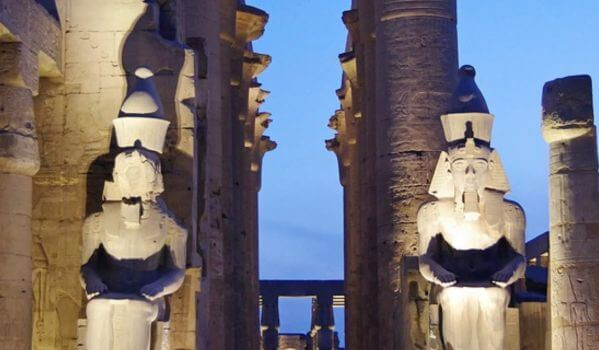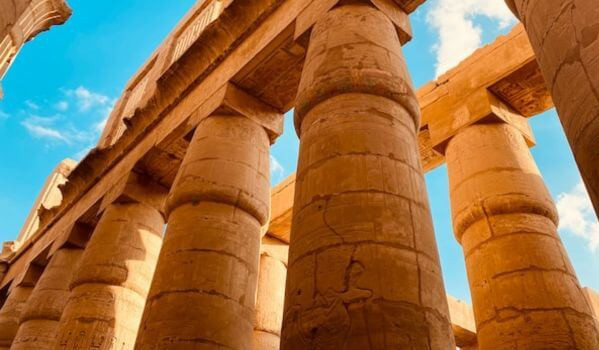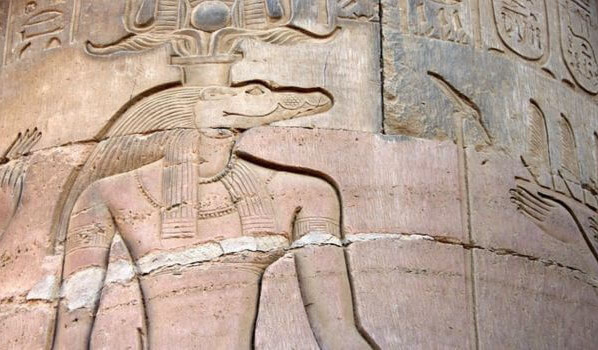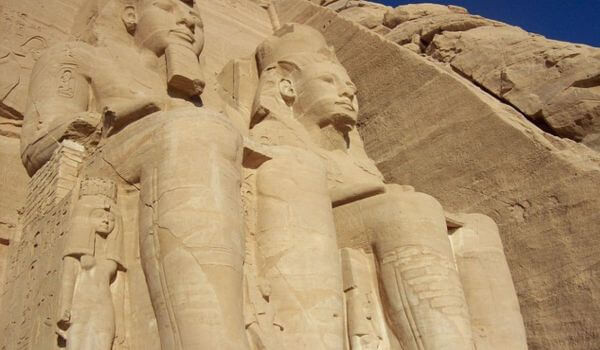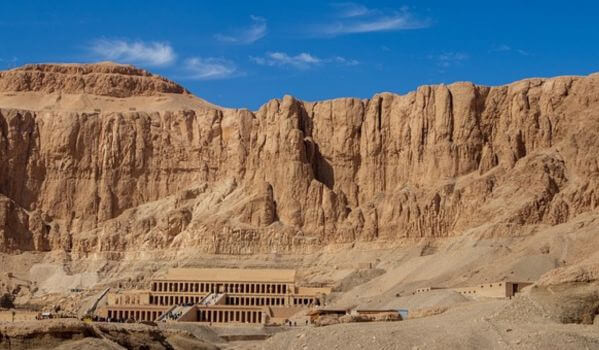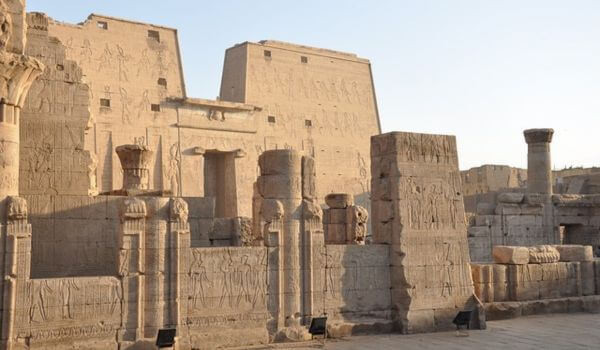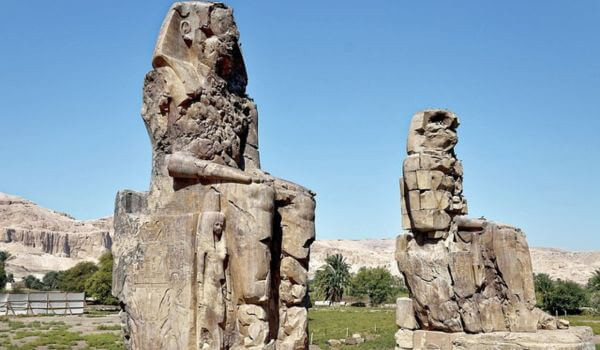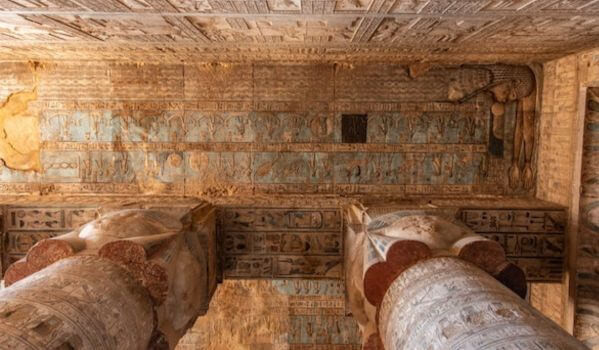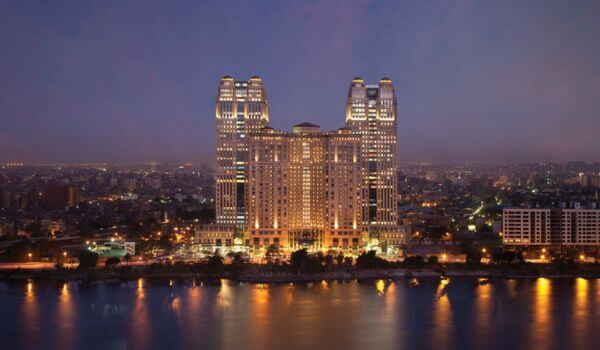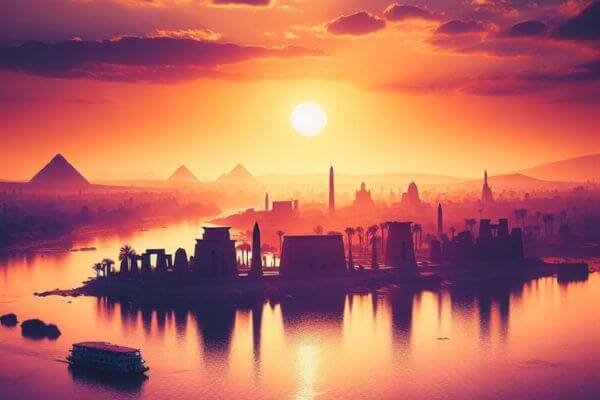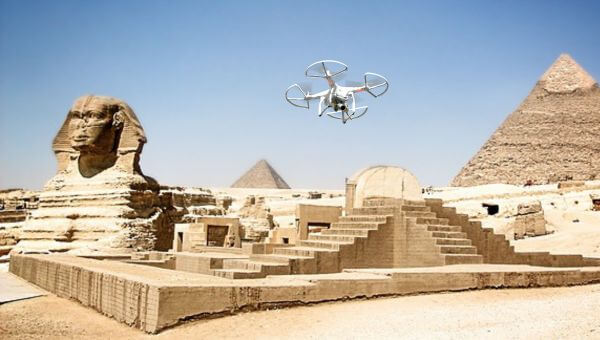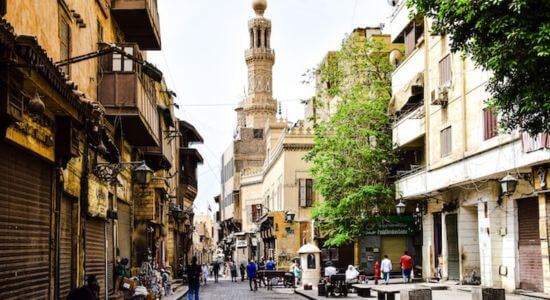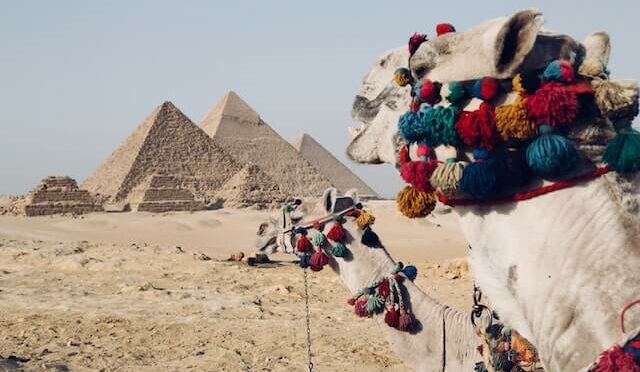13 Best Temples in Egypt You Must Visit
Are you looking for the best temples in Egypt?
Egypt, the land of pharaohs and pyramids, is an enchanting destination that captivates travelers with its rich history and remarkable cultural heritage. At the heart of this ancient civilization lie magnificent temples that stand as enduring testaments to Egypt’s glorious past.
From the majestic Nile River to the sprawling desert landscapes, these sacred structures bear witness to the extraordinary architectural prowess and spiritual beliefs of the ancient Egyptians.
In this blog post, I will take you on a journey through time and unveil the 13 best temples in Egypt you must visit.
Each temple is a unique piece of the puzzle that tells the story of a civilization that thrived thousands of years ago. From the grandeur of Luxor to the serenity of Aswan, we will traverse the length and breadth of Egypt to uncover these remarkable sites.
Step into the footsteps of the pharaohs, walk the halls of gods and goddesses, and witness the profound rituals that once took place within these hallowed grounds.
Best Temples In Egypt
The Great Pyramid of Giza and Ancient Egyptian Temples are the most visited sights in the world and one of the main reasons people come to Egypt. If you are planning a trip to the country of ancient civilization, here is a list of the best temples in Egypt that you must visit.
1. Luxor Temple
Luxor Temple considered the world’s largest outdoor museum, can be found on the east bank of the Nile River in Luxor city. Luxor, the former name Thebes was the capital of Egypt during the New Kingdom.
Luxor Temple was built around 1400 BCE primarily by pharaohs Amenhopet III, Ramesses II, and Tutankhamun. This temple was dedicated to three Egyptian Gods Amun, Mut, and Chons.
This temple was significant for the most important festival in Thebes, Opet. Today, Luxor Temple is one of the most visited temples in Egypt and most of the cruises start and end in Luxor. It also belongs to the UNESCO Site Heritage.
The best time to visit Luxor Temple is early in the morning with sunrise or late during the sunset. It is also beautiful in the evening when it is lightened with lights.
Location: Luxor city center, on the east bank of the Nile River
Opening hours: 6 am until 9 pm or 10 pm, depending on the season. Opening hours during Ramadan may vary.
2. Karnak Temple
Karnak Temple is the largest religious complex not only in Egypt but the whole world and it is dated back to 2000 BCE. This temple was devoted to the Theban triad of Amun, Mut, and Khonsu.
In addition to its central temple, Karnak boasts a collection of smaller chapels and sanctuaries, each dedicated to various deities. Grand halls, docks, and a sacred lake further embellish this magnificent site, while towering pylons serve as majestic gateways, marking the entrances to these sacred spaces.
One sight stands out among the countless wonders within Karnak, which is the Great Hypostyle Hall. This monument commands attention with a staggering 134 massive columns, some reaching heights of nearly 70 feet (21 meters), meticulously aligned in 16 rows.
From the southern entrance of the temple, an awe-inspiring path known as the grand Avenue of the Sphinxes stretches for one and a half miles (3 km), gracefully guiding visitors towards the illustrious Luxor Temple and the majestic banks of the River Nile.
The best time to visit Karnak Temple is early in the morning or during sunset. However, you can also attend light and sound shows that are happening later in the evening.
Location: Luxor
Opening hours: 6 am until 5:30 pm. The light shows starting from 7 pm until 10 pm and they are in different languages, so you should check and choose the one you want before booking.
3. The Temple of Kom Ombo
The Temple of Kom Ombo can be found on the east side of the River Nile in the village holding the same name Kom Ombo, about 45km from Aswan.
This Temple is very unique as it was dedicated to two Gods, crocodile-headed God Sobek and falcon-headed God Horus. Because of this twin dedication, the temple is duplicated. There are two entrances, two hypostyle halls, two courts, and sanctuaries.
In the past, the river of Nile in this area was full of crocodiles and people were scared to come to the temple. There was even a small pool inside where crocodiles were raised.
Today, the only crocodiles you will find here are the mummified ones in the museum next to the temple.
Check my comprehensive guide about the Temple of Kom Ombo Here
Location: Kom Ombo village, 45 km from Aswan
Opening hours: 9 am until 5 pm
4. Abu Simbel
Abu Simbel Temple is actually two separate temples built by Ramesses II and is dedicated to himself, Gods Amun, Ra-Horakhty, and Ptah, and also to his wife Queen Nefertari. It took 20 years to build the temples.
The first larger temple is recognized by four 20 m tall statues of Ramesses II and the smaller statues next to his feet represent his wife Nefertari, his children, and his mother.
The smaller temple is dedicated to the goddess Hathor and his wife Nefertari. There are two groups of colossi divided by the gate. The statues are about 10 m high and represent the king and the queen.
Due to the location of Abu Simbel, the best is to take a tour to visit it. However, you can also hire a car, take a public bus, or chartered tourist bus or boat.
Location: Upper Egypt, 300 km from Aswan, close to the border of Sudan
Opening hours: 5 am until 6 pm
5. Temple of Hatshepsut
The Temple of Hatshepsut, also known as “Djeser-Djeseru”, which means “Holy of Holies” in the ancient Egyptian language stands as a testament to the remarkable legacy of Hatshepsut, the illustrious pharaoh of the 18th dynasty.
Not only is Hatshepsut recognized as the longest-reigning female pharaoh, but historians also hail her as one of the most accomplished leaders of Ancient Egypt, often revered as the “first great woman in history.”
Resonating with solemnity and reverence, this architectural marvel takes the form of a mortuary temple, a sacred structure constructed as a memorial to honor the pharaoh under whose reign it came into being.
Location: Dear el-Bahari, on the bank of the Nile, near Luxor
Opening hours: 6 am until 5 pm
6. The Temple of Isis
The Temple of Isis, also called as Temple of Philae was originally built on Philae Island. However, due to the flood caused by building the Aswan Dam, the Temple of Isis was almost lost. Thanks to Unesco’s help, the Egyptian government managed to move it to Agilkia Island.
This temple was among the final ones built to honor Isis, a goddess revered for her role in reviving her husband, Osiris after he was killed and torn apart by his brother Seth.
Their union brought forth their son, Horus, a significant deity in Ancient Egyptian mythology. Due to her divine status as the mother of Horus, Isis was bestowed with the esteemed title of “Mother of God.”
Location: Agilkia Island, south of Aswan
Opening hours: 7 am until 4 pm
7. The Temple of Edfu
The Temple of Edfu is located in the city of Edfu between Luxor and Aswan and is dedicated to the deity Horus, therefore it is also called the Temple of Horus.
This temple is the second largest in Egypt, after Karnak Temple, and is the best-preserved temple of the ancient Egyptian temples due to the fact that it was under 12 meters of sand for 200 years.
The Edfu Temple was constructed on the land where the legendary battle between good and evil took place in ancient Egyptian mythology. This momentous clash involved the revered gods Horus and Set, representing the forces of good and evil respectively.
Location: In the Edfu city between Aswan and Luxor. Best visited during a Nile cruise
Opening hours: 7 am until 5 pm
8. Ramesseum Temple
Ramesseum Temple is a mortuary temple of Pharoah Ramesses II dedicated to him and God Amun Ra and can be found in Theban Necropolis on the west bank of the River Nile.
The most impressive about this temple is a statue of Ramesses II which is 18 m high and weighs about 1,000 tons. Inside, you’ll find a massive Hypostyle hall with 29 remaining columns, each intricately adorned with carved scenes depicting the legendary battle of Kadesh and the Syrian wars.
Location: Luxor
Opening hours: 6 am until 5 pm
9. Colossi of Memnon
Constructed approximately in 1350 BC, the Colossi of Memnon consists of two enormous stone statues, 18 meters high with weight about 700 tons each, portraying Pharaoh Amenhotep III seated majestically.
Initially, these statues served as guardians at the entrance of Amenhotep’s mortuary temple, a place of worship for the pharaoh before and after his passing.
Although the Colossi were once part of the largest temples in ancient Egypt, only the two statues remain today, as the rest of the temple complex has mostly vanished. However, both statues have suffered significant damage over time, with the upper portions above the waist now scarcely recognizable.
Location: Luxor
Opening hours: 6 am until 5 pm
10. Temple of Seti I (Abydos Temple)
Temple of Seti I is the most significant temple in Abydos Temple, located in Abydos city and was built in 1300 BC. It is also a mortuary temple of Pharaoh Seti I.
Within the temple lies the Abydos King List, which serves as a historical record listing numerous dynastic pharaohs of Egypt in chronological order. Starting from Menes, the esteemed Egyptian king attributed to the establishment of the First Dynasty, the list extends until Ramesses I, who was the father of Seti.
Location: Abydos City, Upper Egypt, Sohag Governorate
Opening hours: 7 am until 6 pm
11. Medinet Habu Temple
Medinet Habu, situated on the west bank of Luxor, is a name that translates to “huge temple complex” in Arabic. This temple was constructed by two pharaohs, Hatshepsut and Tuthmosis III, who dedicated it to the god Amun.
Adjacent to their temple, Ramesses III built his own mortuary temple. The entrance tower on each side vividly depicts scenes of Ramesses triumphing over his enemies. Additionally, the tower features a statue of the goddess Sekhmet carved from granite.
Upon entering the Migdol tower, you’ll encounter a vast open space leading to the first pylon of Ramesses’ mortuary temple. The temple walls proudly display inscriptions detailing the military victories of Ramesses III.
Location: Luxor
Opening hours: 6 am until 5 pm
12. Dendera Temple
The Dendera temple complex is remarkably well-preserved, and the most decorative temple. Spanning an expansive area of 40,000 square meters, this site is truly immense.
With multiple layers of Egyptian history converging in one place, Dendera can be considered a remarkable testament to architectural evolution over time.
The main temple, dedicated to the goddess Hathor, is truly awe-inspiring. Its grand hypostyle halls and intricately carved ceilings and columns are a sight to behold.
Among the many treasures within, the Dendera Zodiac stands out as a particularly captivating piece. This stunning bas-relief on the temple ceiling is a rarity in Egyptian art, adding to the allure of Dendera.
Location: On the west bank of River Nile, opposite the town Qena, about 60 km from Luxor
Opening hours: 7 am until 5 pm
13. The Unfinished Obelisk
The Unfinished Obelisk in Egypt is a remarkable archaeological site that offers a glimpse into the ancient art of obelisk construction.
Located in the northern region of Aswan, this massive stone monument was left unfinished, providing insights into the ancient quarrying techniques employed by the ancient Egyptians.
Carved from a single piece of granite, the Unfinished Obelisk stands as a testament to the ambitious projects undertaken by the ancient civilization.
Despite being unfinished, it showcases the incredible precision and craftsmanship of the ancient Egyptians, leaving visitors in awe of their engineering prowess.
Location: Aswan
Opening hours: 7 am until 4 pm
FAQs: Best Temples In Egypt
Throughout this blog post, we have traveled on a captivating journey to explore the 13 best temples in Egypt that deserve a special place on every traveler’s itinerary. For more information about visiting temples in Egypt, read my FAQs below.
When is the Best Time to Visit Temples in Egypt?
The best time to visit Temples in Egypt is in Spring and Autumn when the weather is not so hot. Winter is also a good time, but it is a peak season, so it is a busy period of time, and also the prices are the highest. I would not recommend visiting during the summer as it is too hot.
In whichever season you decide to visit, the best times are early in the morning or later in the evening when you can catch stunning pictures with sunrise or sunset.
What to Wear While Visiting Temples in Egypt?
When visiting temples in Egypt you should wear light, loose, and comfortable clothes as the temperatures are high. As a woman, dress conservatively, and cover your shoulders and knees.
As a man, you can wear shorts or long trousers, a T-shirt or a shirt. Most importantly, wear very comfortable shoes as you will walk a lot. If you are coming during the winter months, bring a sweater or jumper as evenings are a bit colder.
What is the Famous Temple on the Nile?
Luxor Temple located on the east bank of River Nile is the most famous. Built from Nubian sandstone around 1400 BCE.
What is the Most Colorful Temple in Egypt?
Dendera Temple is the most colorful and decorated temple in Egypt.
Conclusion – 13 Best Temples In Egypt
Egypt’s rich tapestry of history and spirituality is intricately woven within its magnificent temples. From the iconic structures of Luxor and Karnak to the hidden gems of Edfu and Dendera, each temple holds a unique story waiting to be discovered.
As you embark on a journey through time, you will be captivated by the grandeur of ancient architecture, the allure of sacred rituals, and the profound myths that have shaped Egyptian civilization.
Whether you are a history enthusiast, an art lover, or a seeker of profound experiences, these temples offer an unparalleled voyage through time.
